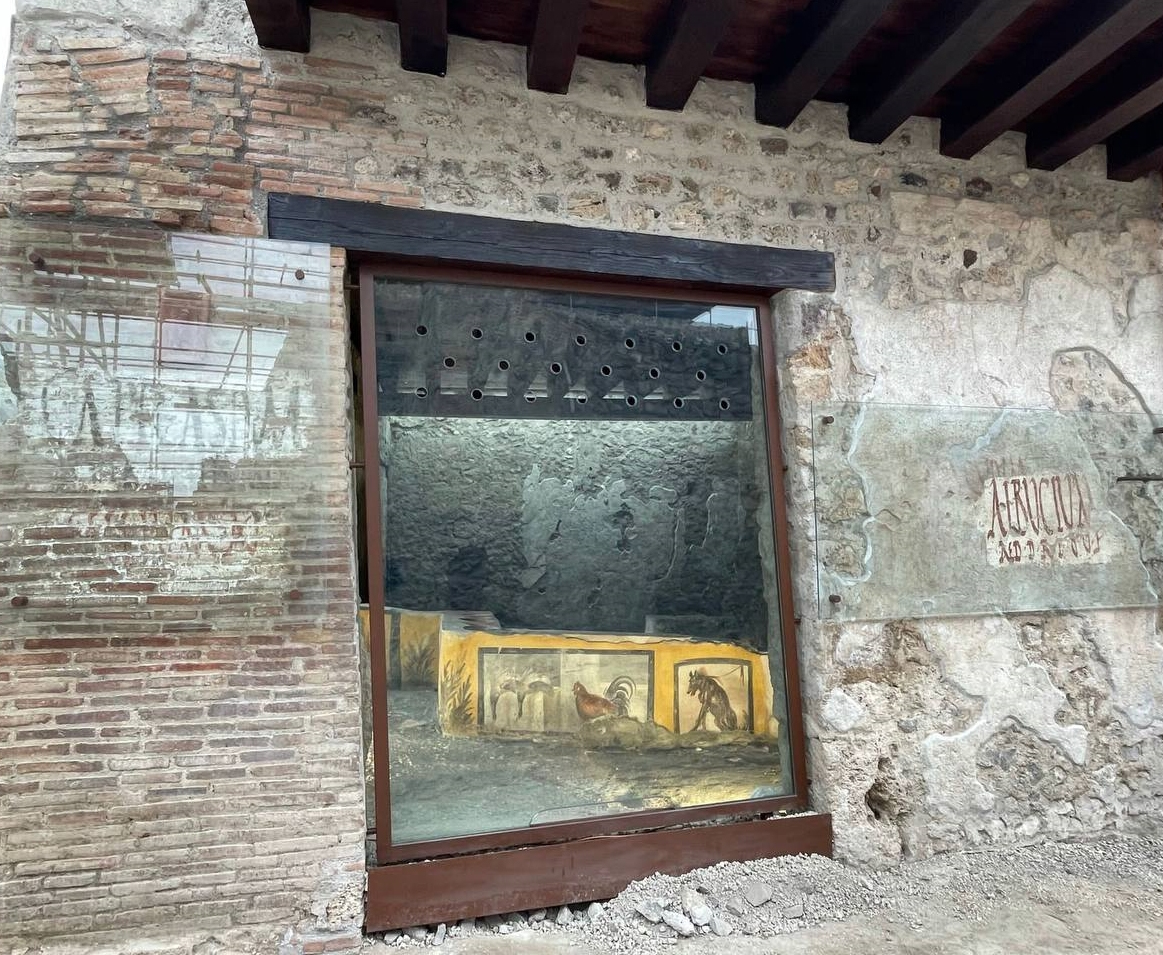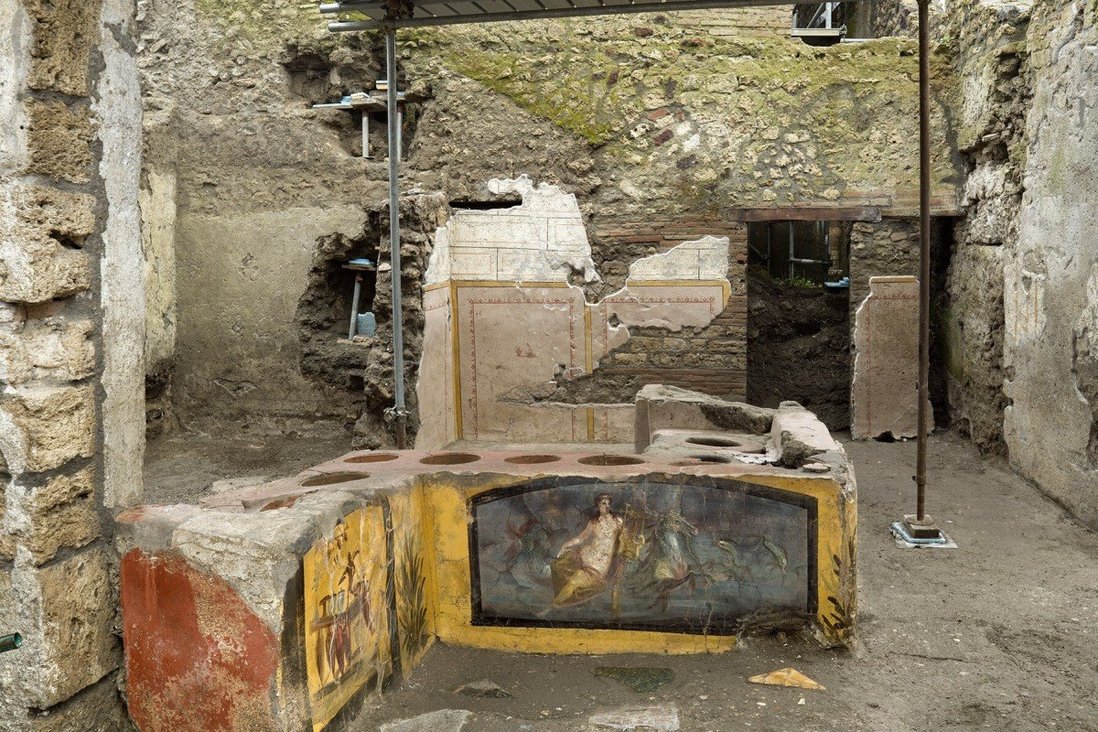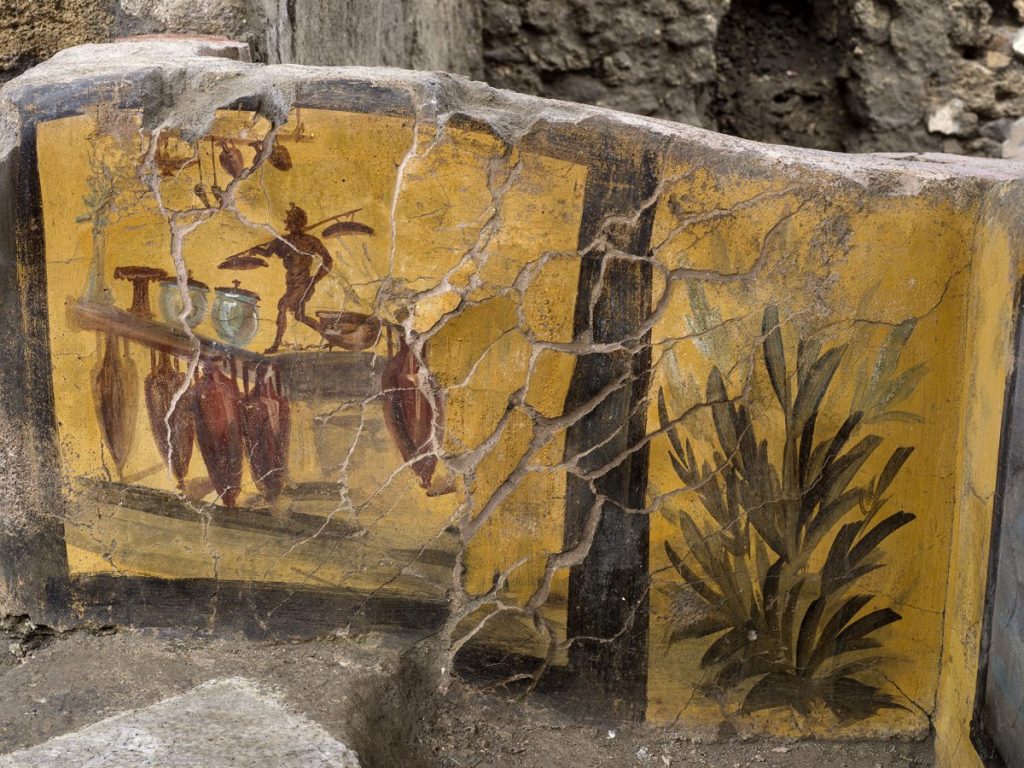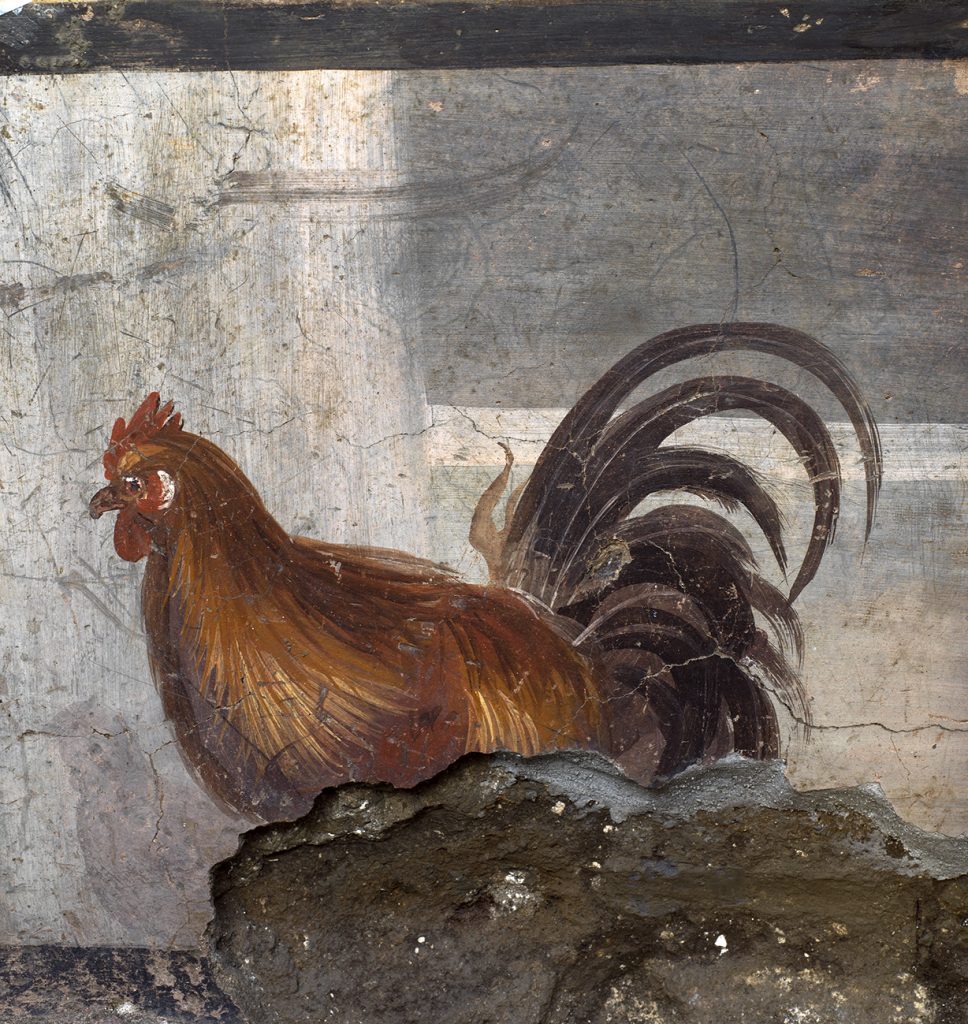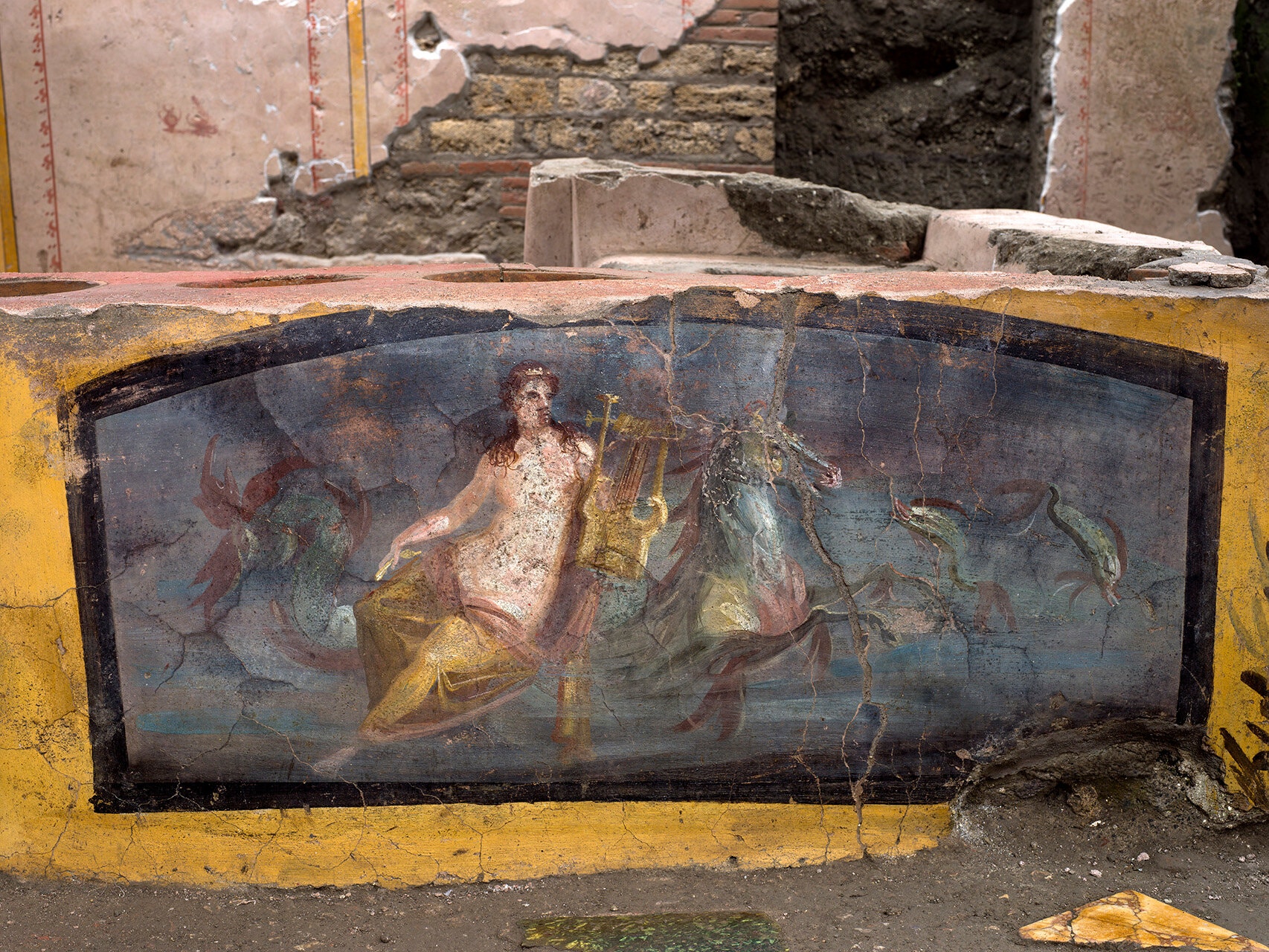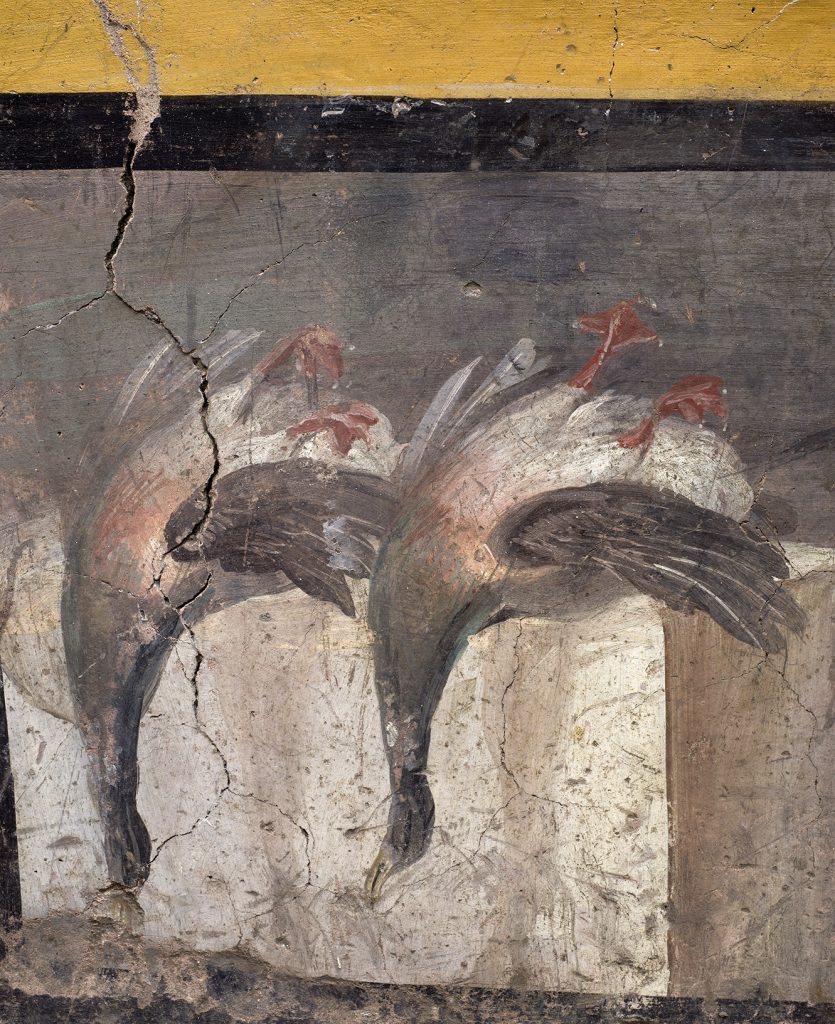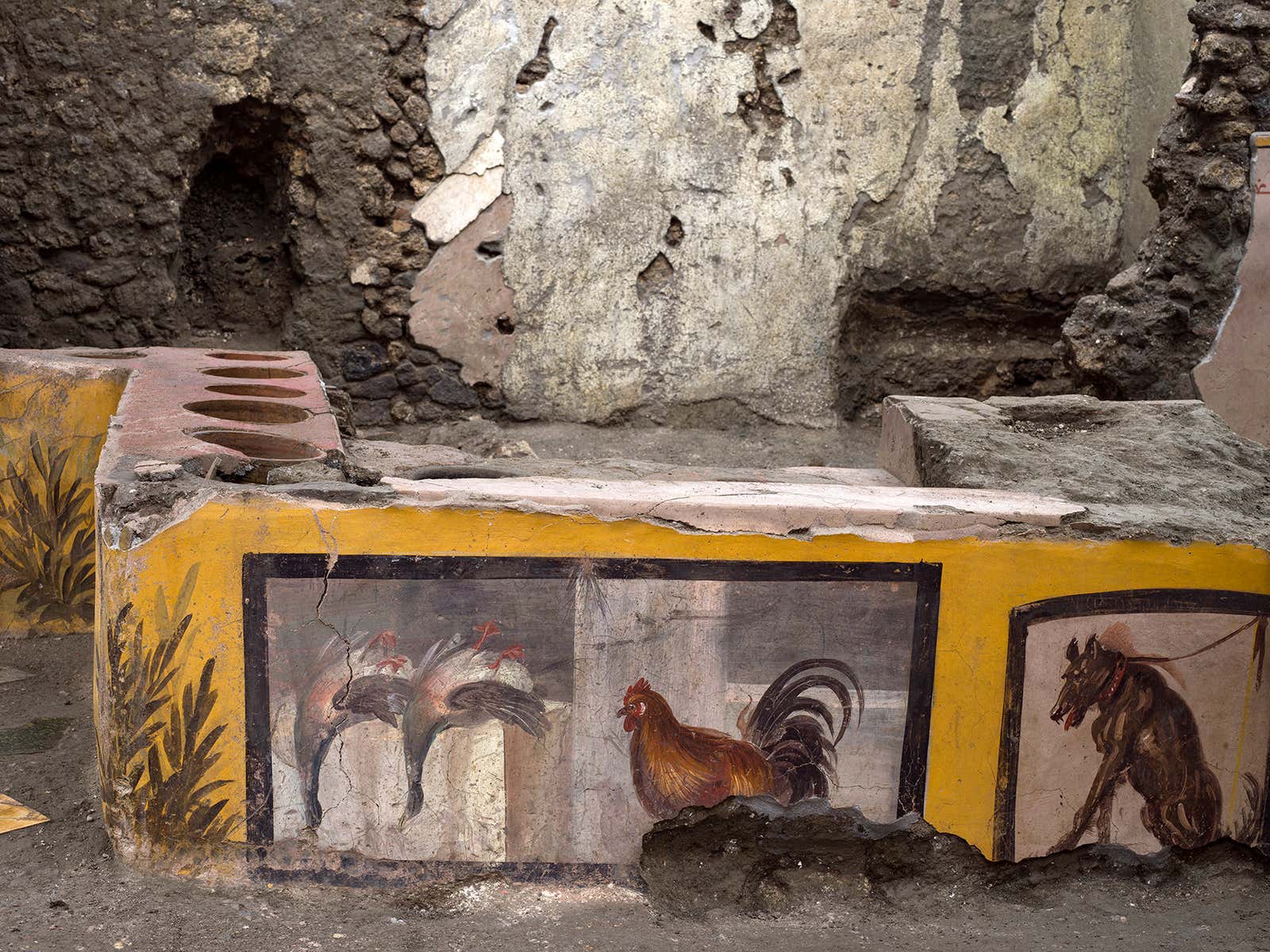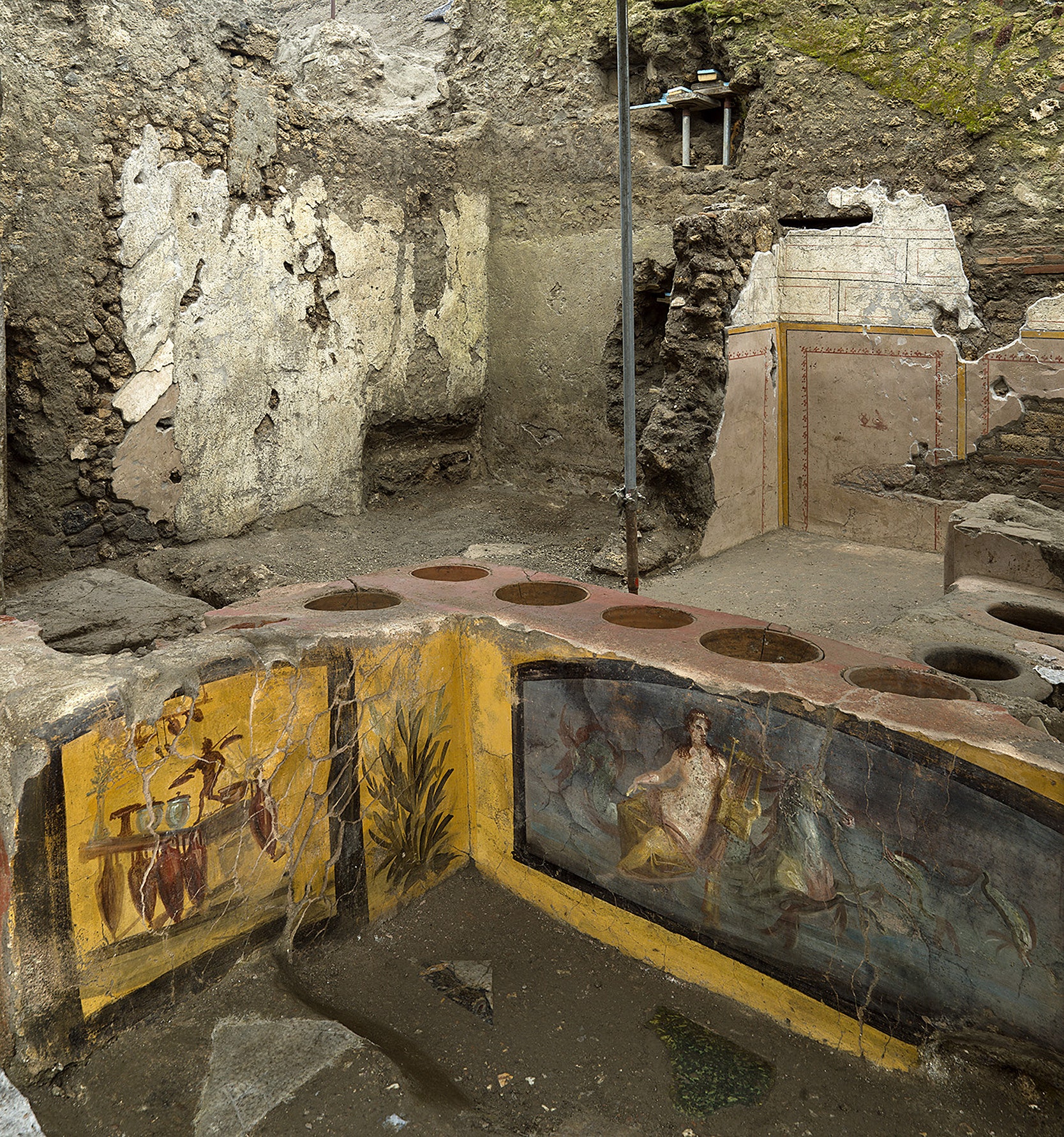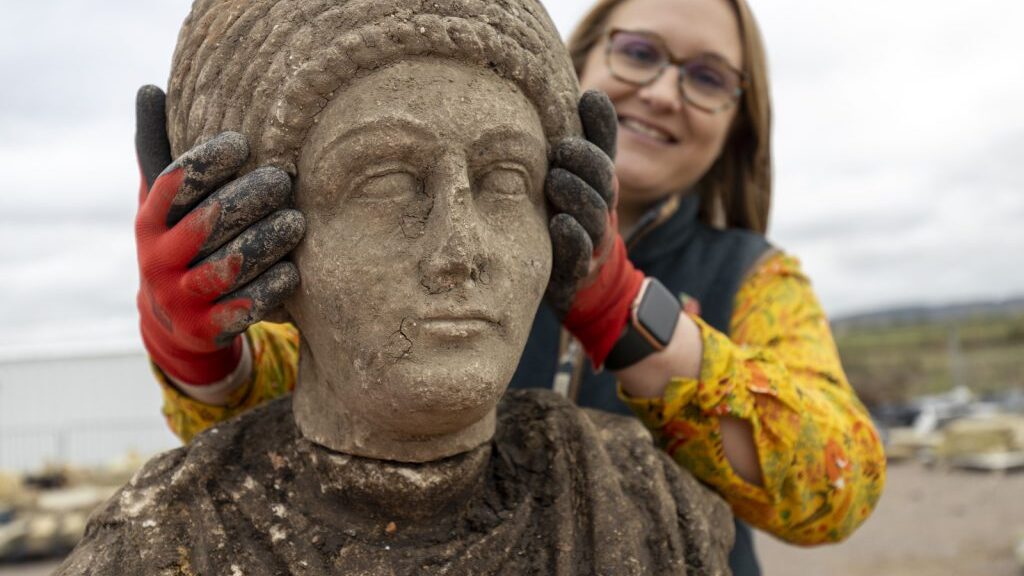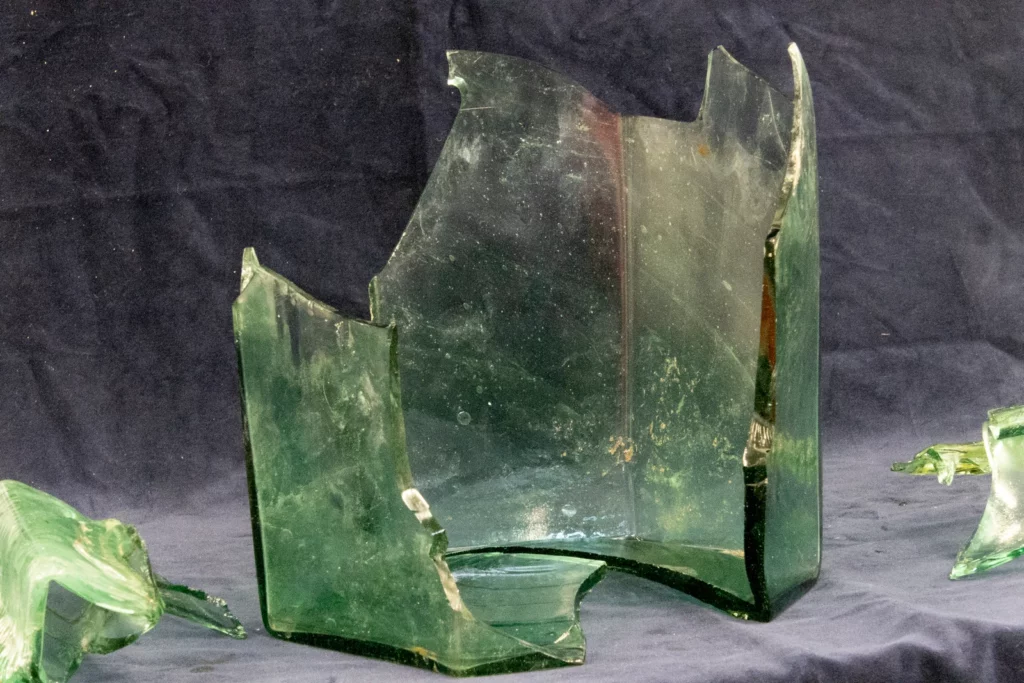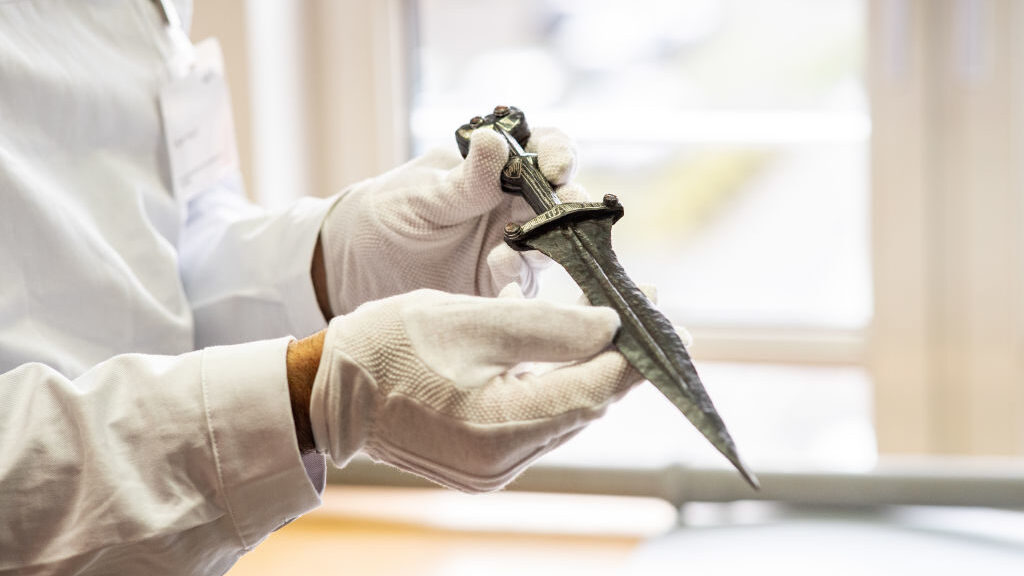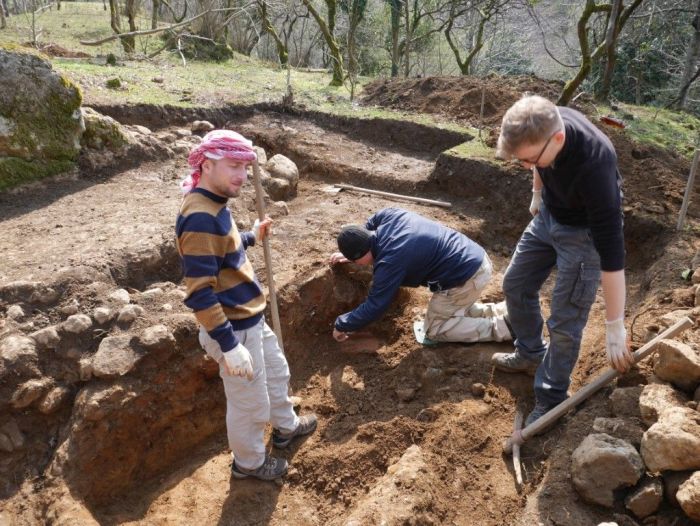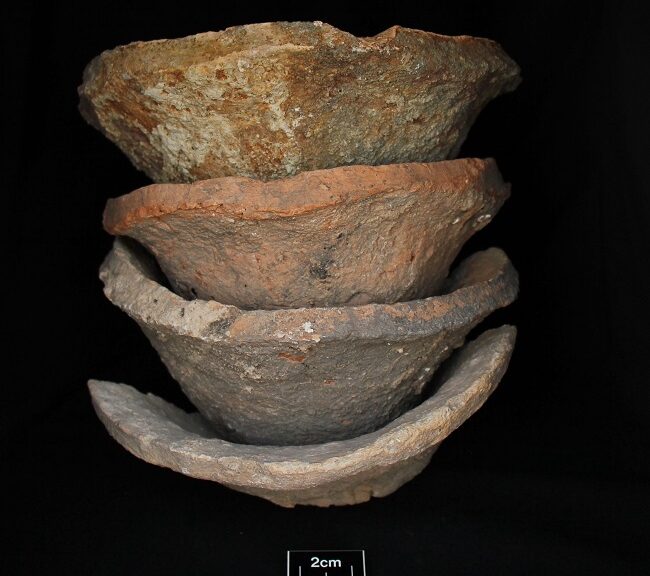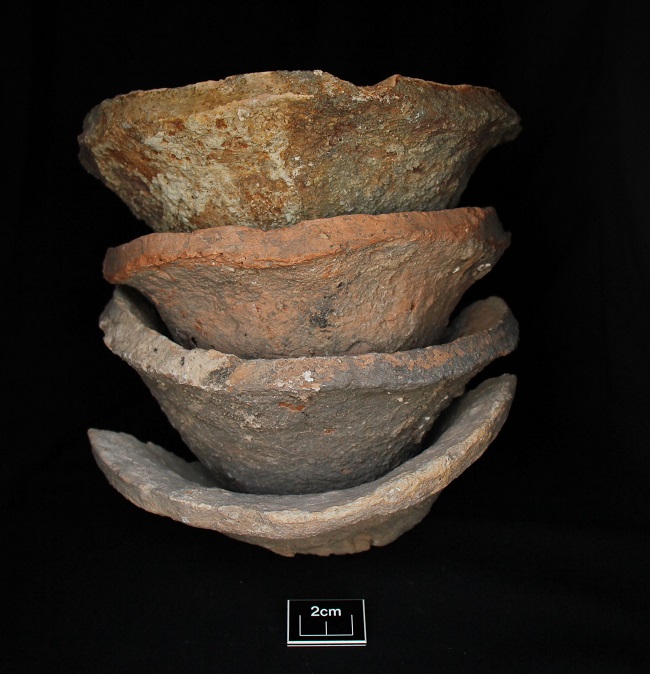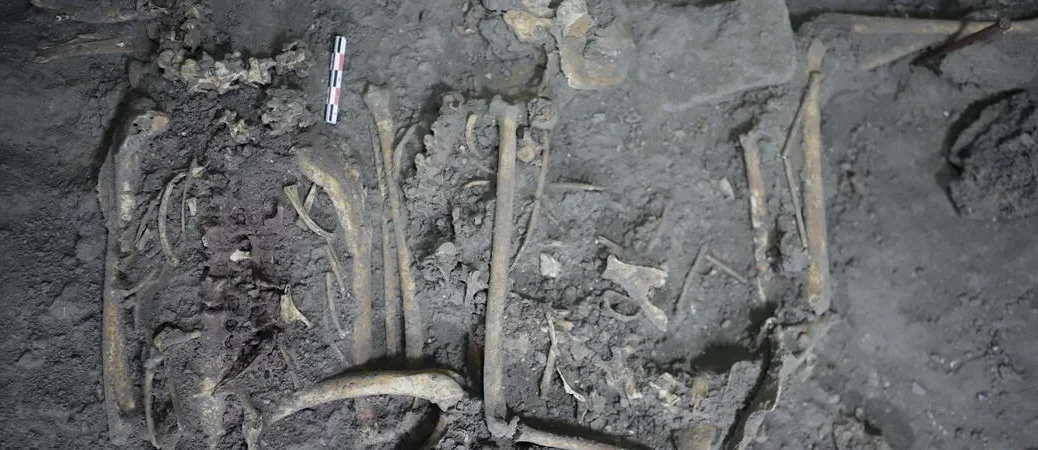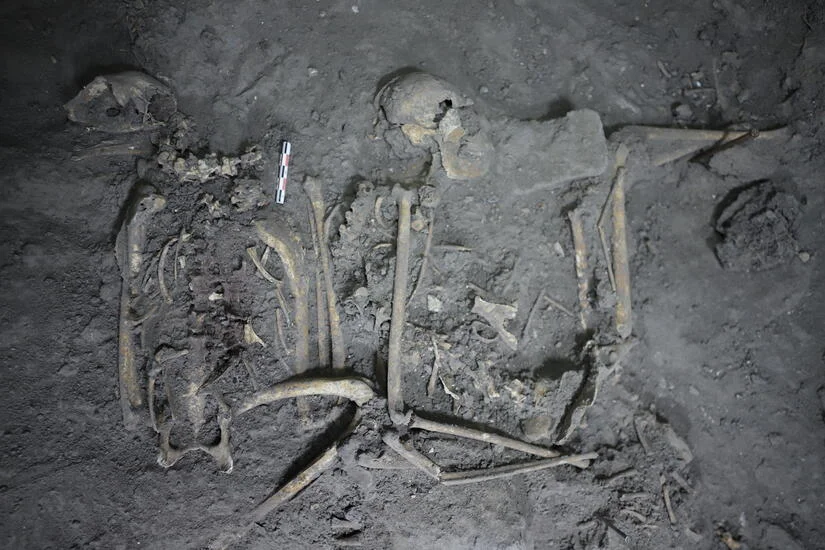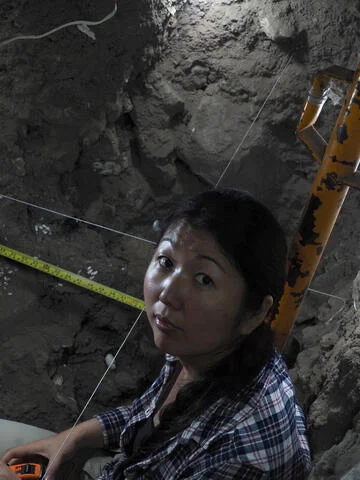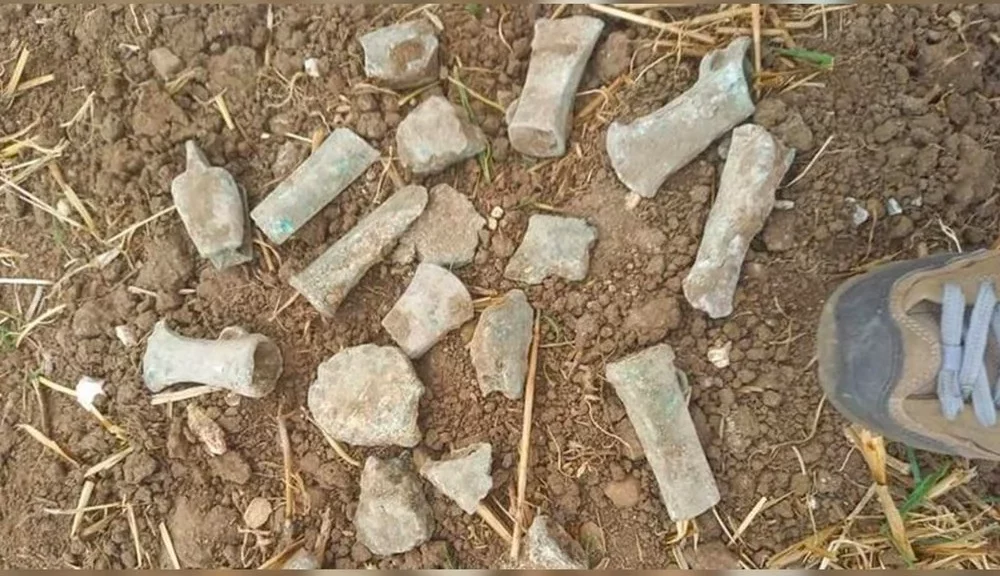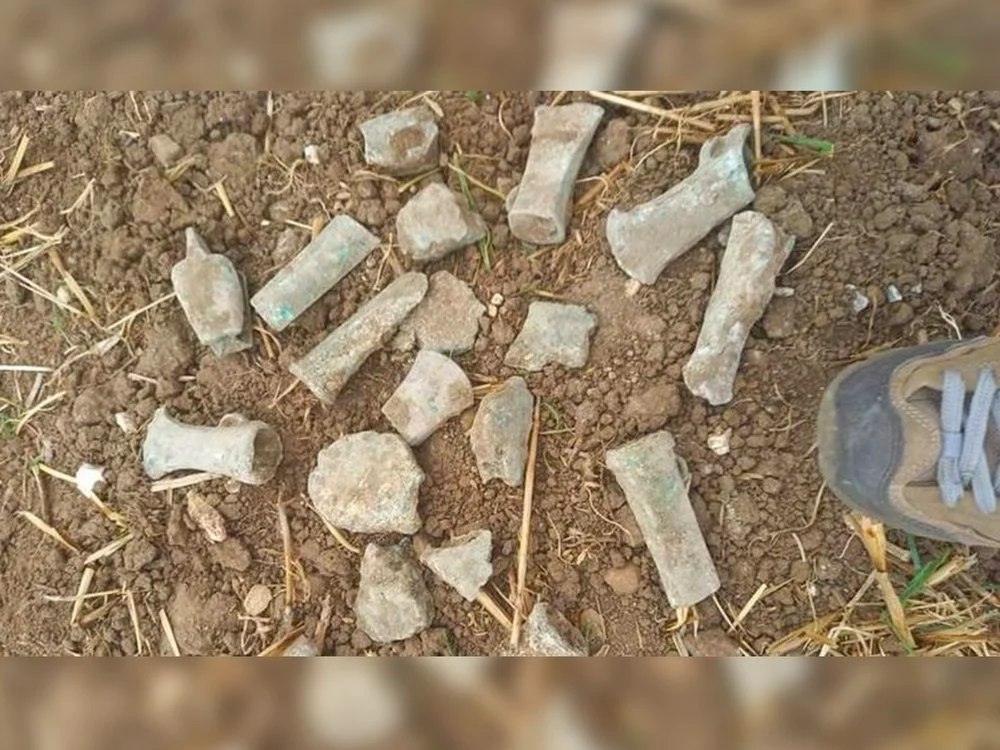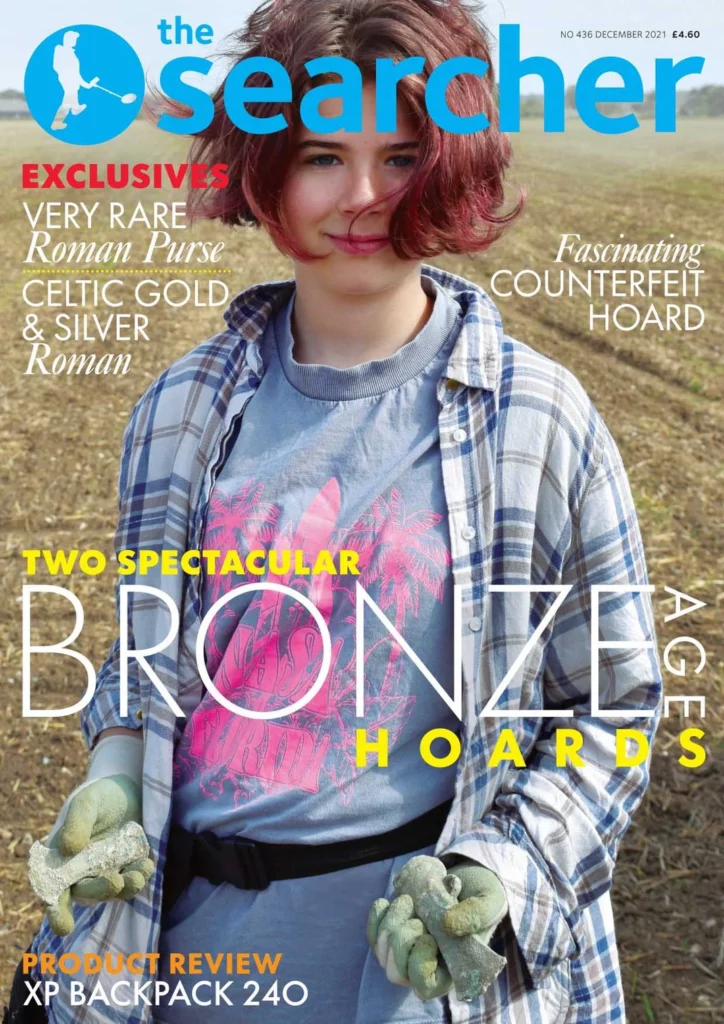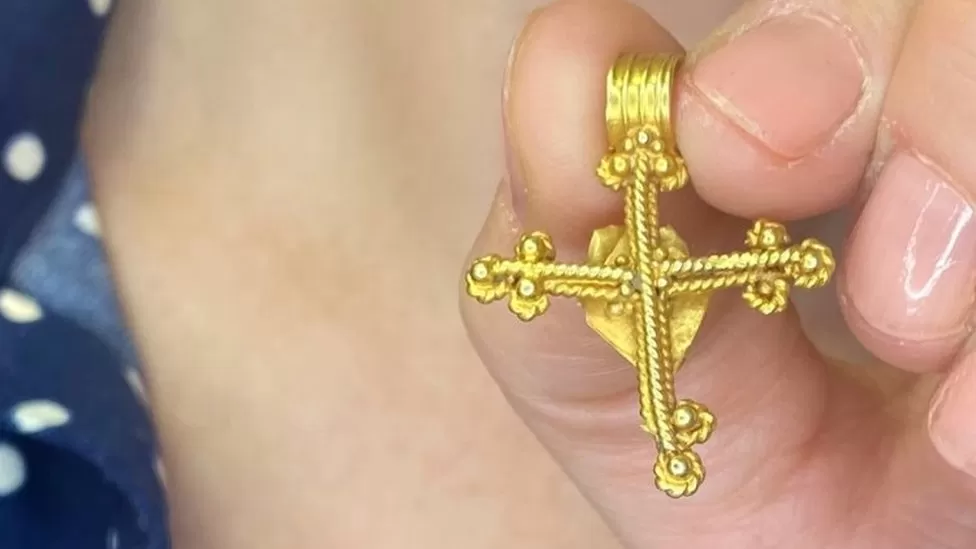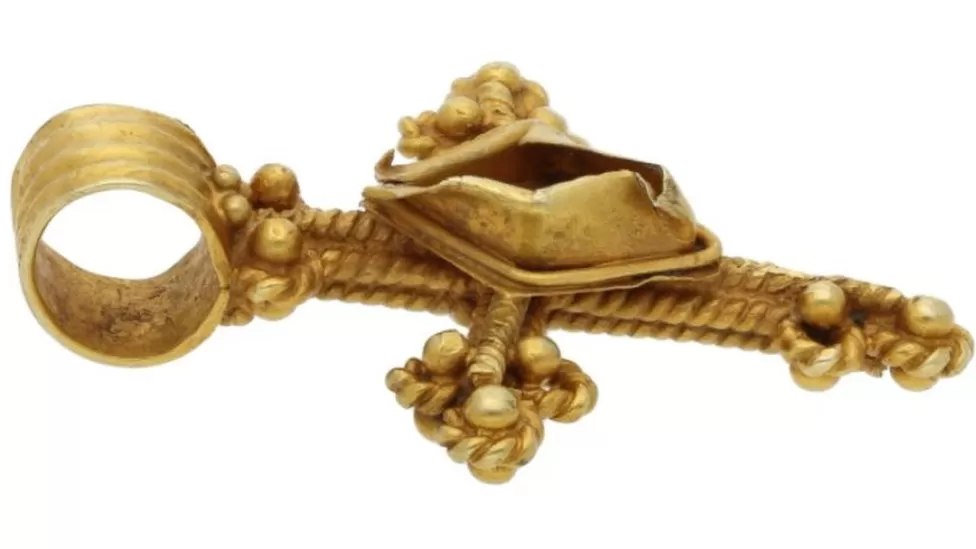An Ancient Fast Food Restaurant in Pompeii That Served Honey-Roasted Rodents Is Now Open to the Public

Archaeologists studying the Roman city of Pompeii recently discovered a thermopolium—a kind of ancient fast food restaurant—and it is now open to the public.
Visitors won’t be able to try the Roman delicacies that would have been served at the original restaurant—since this is a society that thought honey-roasted rodents raised in jars were a delicacy—but they will be able to see the establishment’s colourful fresco paintings.
One artwork seemingly features ingredients that would have been prepared at the thermopolium, such as a rooster, while another shows a scene from mythology, with a Nereid riding a sea-horse.
A third depicts a collared dog and Roman-era graffiti that roughly translates to “Nicias Shameless Shitter,” presumably an insult to the owner, Nicias.
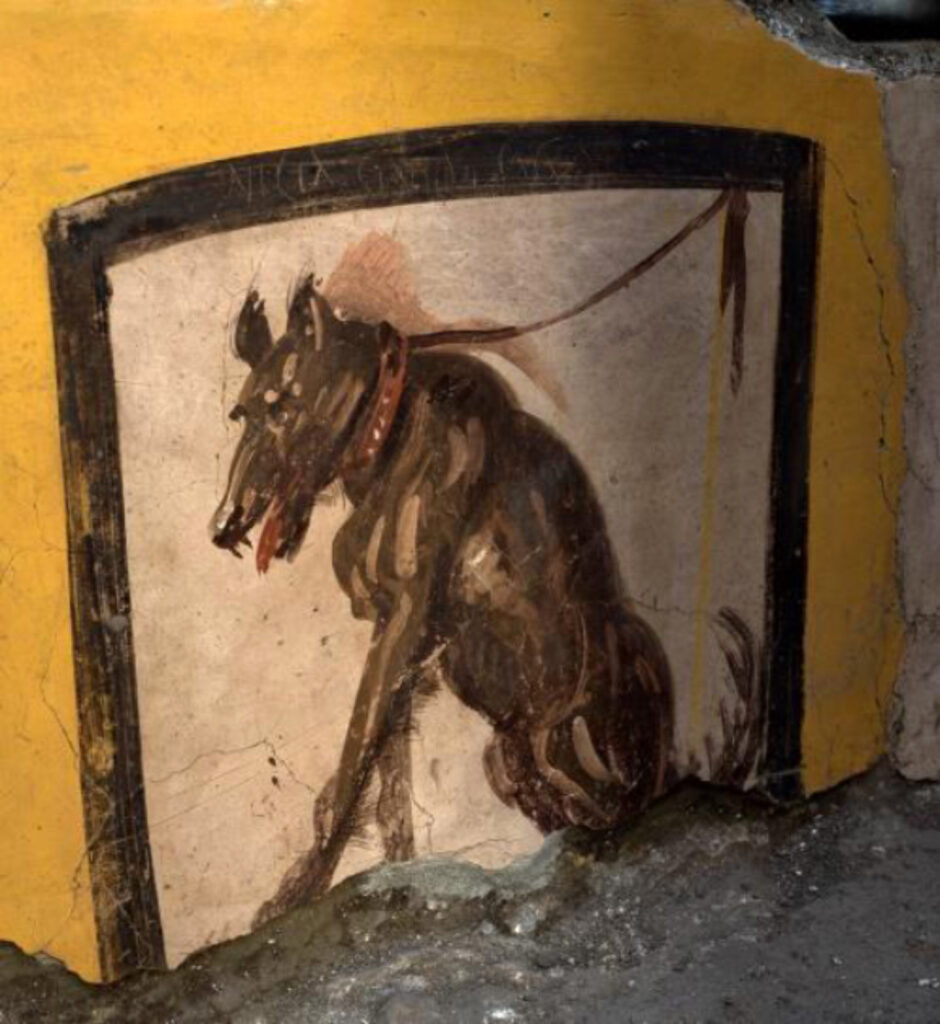
The discovery, in 2019, “led to a greater understanding of the diet and daily life of Pompeians,” Massimo Osanna, the former head of the Pompeii archaeological park and now director general of Italy’s museums, said in a statement.
Experts believe prepared food would have been displayed in large dolia jars set in holes carved in the stone counter, similar to today’s take-out restaurants.
The excavations uncovered duck, pig, goat, and fish bones, as well as snail shells amid shards of earthen pottery, suggesting that some kind of meat and seafood stew may have been on the menu. Typical dishes served at a thermopolium would have included salty fish, baked cheese, lentils, and spicy wine, according to the Guardian. (One jar apparently still smelled strongly of wine when archaeologists first discovered it.)
The dining culture and culinary traditions of Pompeii are currently the subject of “Last Supper in Pompeii,” an exhibition at San Francisco’s Legion of Honor museum.
The city’s sudden destruction with the eruption of Mount Vesuvius in the year 79 A.D. instantly carbonized food and cookware, leaving a record of day-to-day life frozen in time.
The thermopolium was a fixture of Pompeii—the newly discovered site is just one of 80 such restaurants that have been found in the city—because poor Roman families couldn’t afford to have kitchens in their homes. And, in an inversion of contemporary society, the wealthy didn’t go out for expensive meals. Instead, they had enslaved workers prepare feasts at home, served up in richly decorated banquet halls.
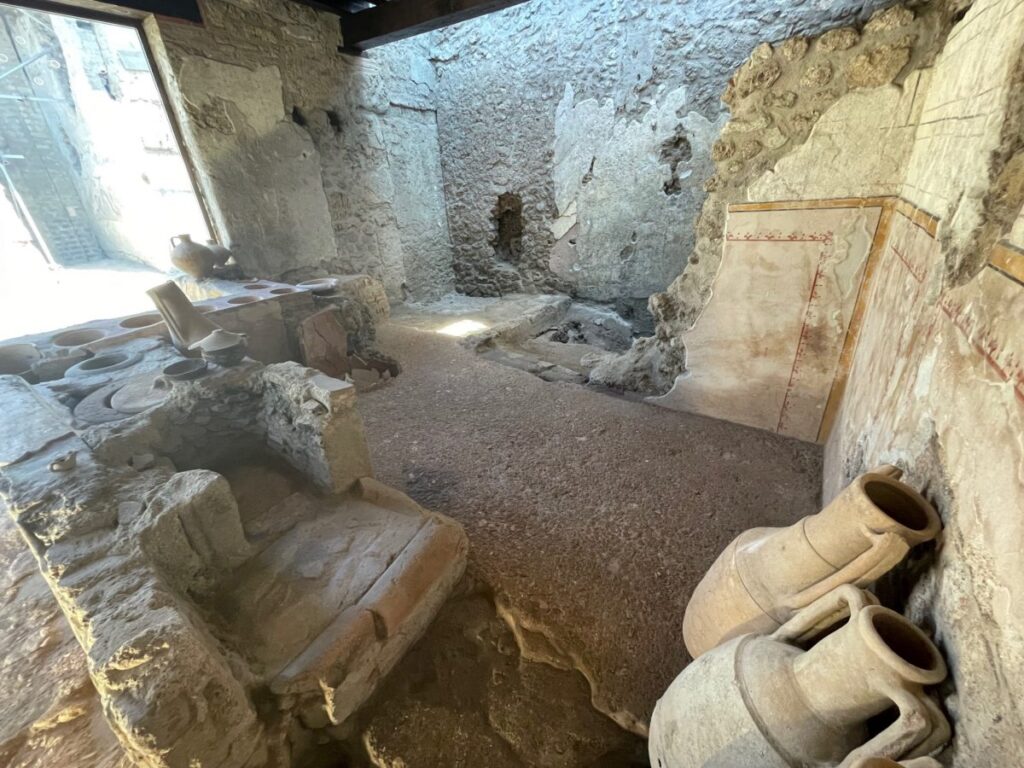
Archaeologists uncovered the thermopolium during excavations at Regio V, a section of Pompeii that is not yet fully open to the public and has been home to most of the active digging on the site since the 1960s. In addition to the restaurant, sections of the Casa di Orione and Casa del Giardino mansions are also opening to visitors this week.
Other recent Regio V finds include a skeleton of a man believed to have been killed fleeing the volcano and a selection of amulets that may have belonged to a female sorcerer.
Human bones found at the new thermopolium suggest the business’s proprietor may have died on the premises.

